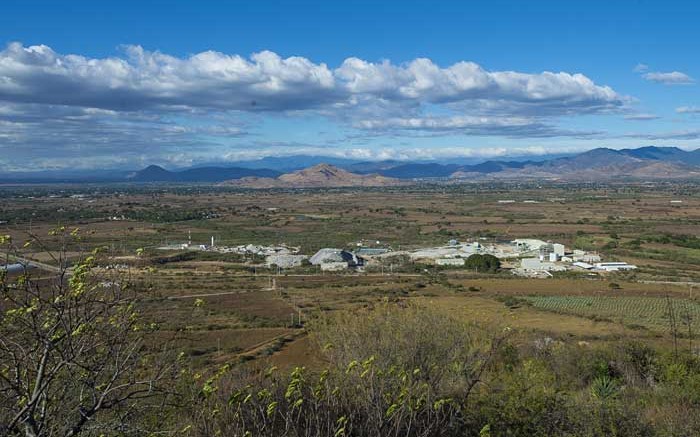Fortuna Silver Mines (TSX: FVI; NYSE: FSM) expects its San Jose mine in Mexico will produce 4 million oz. silver and 30,400 oz. gold this year, up from the 2.5 million oz. silver and 19,031 oz. gold it churned out in 2013.
In April the company expanded the mine and mill — 47 km south of the city of Oaxaca — to 2,000 tonnes per day, and is studying whether it should expand to 3,000 tonnes per day.
In the meantime, it is laying out the next phase of organic growth with stepout drilling at San Jose’s high-grade Trinidad North zone, which is open at depth and to the north.
The plan is to incorporate ore from Trinidad North into San Jose’s production blend by the first quarter of 2015.
Drilling at Trinidad North of another 41 stepout and 12 infill holes during the second half of 2013 and the first half of 2014 extended the zone 200 metres north and drove growth in the updated resource estimate released for San Jose on Aug. 26. (Silver and gold resources at Trinidad North increased by 215% and 227%.)
San Jose has measured and indicated resources of 5.8 million tonnes grading 229 grams silver per tonne and 1.81 grams gold per tonne for 42.3 million contained oz. silver (up 42% from the July 2013 resource estimate), and 333,800 oz. gold (up 29% from the year earlier estimate).
Inferred resources total 7.1 million tonnes grading 257 grams silver per tonne and 1.75 grams gold per tonne for 58.9 million contained oz. silver (up 67% from the previous resource estimate) and 400,800 contained oz. gold (up 47%). The resource is based on a silver-equivalent cut-off grade of 100 grams per tonne at metal prices of US$21 per oz. silver and US$1,260 per oz. gold.
San Jose is a high-grade, low sulphidation epithermal vein deposit. Commercial production started at the mine in September 2011 at a rate of 1,000 tonnes per day.
Matthew O’Keefe and Scott Morrison of Dundee Capital Markets, who have a target price of $7.75 per share on the stock, say that the boosted resource makes an expansion to 3,000 tonnes per day look “more economic” under their model.
“The expansion would result in a strong production growth profile of the company, with management guiding to 6 million oz. silver production and 50,000 oz. gold production from a 3,000-tonne-per-day operation [50% increase over prior guidance],” they wrote in a research note. “We model production potentially being higher given our resource-conversion assumptions.”
The analysts do not foresee operating cost savings from an expansion, although there would likely be general and administrative savings, “resulting in cash costs being fairly flat moving forward, with commissioning starting in the fourth quarter of 2016.”
At the end of June Fortuna Silver reported US$60 million in cash and short-term investments, US$5 million in debt and US$73 million in working capital.
The company is also producing gold and silver from its Caylloma mine in southern Peru, 225 km northwest of Arequipa.
Fortuna Silver bought the mine and related concessions in 2005, and after expansion and modernization, the mine resumed production in the fourth quarter of 2006.
Caylloma is a silver and base-metal rich intermediate-sulphidation epithermal deposit.
Last year at Caylloma, Fortuna produced 2.1 million oz. silver, 2,212 oz. gold, 17.8 million lb. lead and 25.2 million lb. zinc.
In the second quarter Fortuna reported a US$2.9-million net income compared with a US$10.6-million loss in the second quarter of 2013 (US2¢ per share profit versus a US8¢-per-share loss .)
Cash cost per payable oz. silver came in at US$5.15, while all-in sustaining costs per payable oz. silver declined 21% year-on-year to US$17.41 per oz., net of by-product credits for gold, lead and zinc.
Lower metal prices were offset to a large extent by lower unit cash costs at the San Jose mine (down 17%), as well as higher head grades and metal recovery, the company says.
Over the last year Fortuna’s shares have traded between a $2.68 low in December 2013 and a $6.59 high in July 2014.
At press time shares traded at $5.56. The company has just over 127 million shares outstanding.


Be the first to comment on "Expanded San Jose mine has more to give Fortuna Silver"